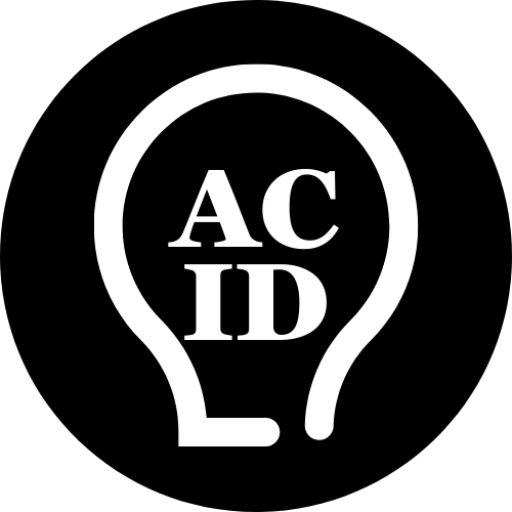Introduction
Ever noticed how some companies seem to have a sixth sense about market shifts? They’re not psychic – they’re just paying attention to the right signals.
Let me share something that might surprise you: 94% of businesses invest in competitive intelligence, yet only 56% believe they’re doing it effectively. That gap isn’t just a statistic – it’s a massive opportunity for companies willing to sharpen their approach.
I’ve spent years helping tech companies navigate competitive waters, and here’s what I’ve learned: competitor analysis isn’t a luxury or a one-off project. It’s the radar system that keeps your business from crashing into icebergs or missing favorable currents.
When done right, competitor analysis gives you the foresight to anticipate market changes, the wisdom to refine your value proposition, and the confidence to make strategic decisions that actually stick. When neglected, you’re essentially flying blind in increasingly crowded skies.
This guide walks you through a practical framework for understanding your competition—not just who they are today, but who they’re becoming tomorrow. We’ll cover everything from identifying your true competitors (hint: they’re not always who you think) to extracting actionable insights that drive real business growth.
What is Competitor Analysis?
Competitor analysis is the process of identifying and evaluating your competitors to understand their strengths, weaknesses, market positioning, and strategies. This understanding enables businesses to make informed decisions about their own positioning and strategy.
The 4 Types of Competitors:
1. Direct Competitors
Direct competitors are businesses that offer the same or highly similar products or services to the same target audience. They share overlapping customer bases, pricing strategies, and marketing channels [apriorit].
- Key Characteristics: Products/services fulfill identical needs (e.g., two CRM software providers targeting small businesses).
- Example: In the software integration market, two companies offering ERP implementation services for mid-sized manufacturers would be direct competitors.
- Overlap Potential: Direct competitors may also be legacy competitors if they are well-established players in the market.
2. Indirect Competitors
Indirect competitors solve the same problem or fulfill similar customer needs but with different products or services. They may not operate in the same industry but still compete for the same customer base.
- Key Characteristics: Offer alternative solutions to the same problem (e.g., a fitness app vs. a gym membership).
- Example: For a software integrator specializing in cloud migration, an indirect competitor could be a company offering low-code platforms that reduce the need for complex integrations.
- Overlap Potential: Indirect competitors can sometimes be emerging competitors if they introduce innovative alternatives that disrupt traditional solutions.
3. Legacy Competitors
Legacy competitors are long-established companies with a strong reputation and market presence. They are often seen as industry leaders or benchmarks for newer entrants.
- Key Characteristics: Have operated in the industry for years with a loyal customer base.
- Example: A legacy competitor in software integration might be a large IT consulting firm that has dominated the market for decades but struggles to adopt agile methodologies or cloud-based solutions.
- Overlap Potential: Legacy competitors can also be direct competitors if they offer similar products/services to the same audience. However, their established status sets them apart from newer direct competitors.
4. Emerging Competitors
Emerging competitors are new entrants to the market offering innovative solutions or unique value propositions. They often disrupt existing markets by addressing gaps or inefficiencies.
- Key Characteristics:Typically leverage new technologies or business models.
- Example: A startup offering AI-driven integration tools that automate workflows could be an emerging competitor in the software integration space.
- Overlap Potential: Emerging competitors can also act as indirect competitors if their innovation provides an alternative solution to traditional methods (e.g., replacing manual integration processes).
Clarifying Overlaps
The potential for overlap exists because these categories are not mutually exclusive but rather describe different dimensions of competition:
| Category | Overlap Explanation |
| Direct vs. Indirect | A competitor can simultaneously offer direct competition in one segment while providing indirect alternatives in another (e.g., Salesforce competing directly with other CRMs but indirectly with Excel). |
| Legacy vs. Direct | Legacy players often remain direct competitors due to their established offerings targeting the same audience. However, their “legacy” status highlights their historical dominance rather than innovation. |
| Legacy vs. Emerging | Emerging competitors may disrupt legacy players by introducing modern alternatives that appeal to evolving customer needs (e.g., startups challenging established firms with cloud-native solutions). |
| Indirect vs. Emerging | An emerging competitor may initially act as an indirect competitor by solving problems differently before becoming a direct threat as they scale up and refine their offerings. |
While overlaps exist between these types of competitors, understanding their nuances helps businesses craft tailored strategies:
- Focus on direct competitors for immediate differentiation.
- Monitor indirect competitors to anticipate shifts in consumer preferences.
- Learn from legacy competitors’ strengths and weaknesses while identifying opportunities to outpace them.
- Keep an eye on emerging competitors for disruptive innovations that could reshape your market.
Why is Competitor Analysis Crucial for Software Integrators?
The software integration market is highly fragmented and competitive, driven by increasing demand for digital transformation and automation. Key reasons to prioritize competitor analysis include:
- Identifying Market Gaps: Understand unmet customer needs or underserved niches.
- Refining Unique Selling Propositions (USPs): Highlight what makes your services stand out [SaffronEdge].
- Adapting to Trends: Stay ahead of technological advancements like AI, IoT, or cloud computing.
- Improving Customer Retention: Learn from competitors’ successes and failures to enhance client satisfaction.
Steps to Conduct Competitor Analysis for Software Integrators
Companies whatever their size is can identify their immediate competitors quite well. We know that personal relationships play a pivotal role in business development within consulting and software integration. Still a deep competitor analysis needs to be done. Here are the 5 main topics to cover in such an analysis:
1. Competitor Benchmarking
- Use search engines with relevant keywords (e.g., “top system integrators”).
- Explore SaaS review platforms like G2, Capterra, or TrustRadius.
- Segment competitors into direct, indirect, legacy, and emerging categories.
2. Analyze Their Offerings
- Evaluate product features, pricing models, and service quality.
- Identify differentiators such as technological expertise or strategic partnerships.
3. Assess Their Market Position
- Study competitors’ market share and customer satisfaction levels.
- Use tools like SEMrush, KeySearch or Ahrefs to analyze their online visibility and keyword rankings.
4. Evaluate Marketing Strategies
- Examine content strategies (blogs, webinars), social media presence, and email campaigns.
- Identify gaps in their engagement tactics that you can capitalize on.
5. Monitor Technological Trends
- Investigate competitors’ tech stacks using tools like Wappalyzer or BuiltWith.
- Stay updated on innovations they adopt to remain competitive.
Note: I can help with a more detailed approach. Do not hesitate to raise a hand and I’ll be more than happy to help you with a full digital marketing audit.
Overcoming Challenges in a Saturated Market
Operating in a saturated market presents significant challenges for businesses, especially in competitive industries like software and software integration. These challenges stem from intense competition, limited growth opportunities, and evolving customer demands.
1. Intense Competition
In the software industry, multiple vendors might offer comparable integration solutions, making it hard for customers to distinguish between them. The first step for a company looking for an ERP is to select the vendor, then to select the right partner. Let’s consider a company in Belgium: they decide to select SAP and now they want to find the best integrator possible. The partner finder lists 67 partners in Belgium only, 116 in The Netherlands, 134 in France and more than 600 partners in Germany (as of January 2025).

- High Number of Competitors: Saturated markets are characterized by numerous players offering similar products or services, making it difficult to stand out.
- Price Wars: To attract customers, companies often lower prices, leading to reduced profit margins and financial strain.
- Homogeneous Offerings: Many products or services lack differentiation, leading to consumer confusion and indecision.
2. Limited Growth Opportunities
A software integrator might struggle to grow without poaching clients from competitors, which requires significant investment in marketing and sales.
- Market Share Plateau: With most customer needs already met by existing players, growth often requires taking market share from competitors rather than expanding the market.
- Customer Acquisition Costs: Attracting new customers becomes increasingly expensive as the pool of untapped prospects shrinks.
3. Pressure to Continuously Innovate
In software integration, businesses must keep up with trends like cloud computing or AI-driven solutions to remain competitive. No code and low code solutions are to be considered as interesting opportunities too.
- Short Product Life Cycles: Rapid technological advancements and changing consumer preferences demand constant innovation.
- Resource Strain: Continuous innovation requires significant investment in R&D, which can be challenging for smaller companies.
- Risk of Stagnation: Companies that fail to innovate risk losing relevance and market share.
4. Customer Retention Challenges
A client using integration software might switch to a competitor offering better support or a more user-friendly interface.
- High Expectations: In saturated markets, customers expect premium experiences at competitive prices.
- Frequent Switching: With many options available, customers are more likely to switch brands for better deals or features.
- Churn Management: Companies must invest heavily in loyalty programs and exceptional service to retain their existing customer base.
5. Marketing Fatigue
Software integrators may find it difficult to differentiate their services through traditional marketing channels when competitors use similar tactics. We consider that every single person is facing between 6,000 and 10,000 ads every day, including a fair share of B2B messages.
- Oversaturated Advertising: Consumers are bombarded with marketing messages, leading to ad fatigue and desensitization.
- Higher Marketing Costs: Standing out requires substantial investment in advertising and promotional efforts.
- Difficulty Reaching Audiences: Cutting through the noise to effectively communicate value propositions becomes increasingly challenging.
6. Reduced Profit Margins
Offering discounted integration services might attract clients but could strain resources and impact long-term sustainability.
- Aggressive Pricing Strategies: To remain competitive, companies often resort to lowering prices, which can erode profitability.
- Cost Pressures: Balancing competitive pricing with rising operational costs becomes a persistent challenge.
7. Difficulty Differentiating Products or Services
A software integrator offering ERP integrations may struggle to stand out if competitors provide identical functionalities at similar price points.
- Commoditization: When products or services become too similar, they are perceived as interchangeable commodities.
- Lack of Unique Value Propositions (UVPs): Differentiating offerings becomes harder as competitors replicate features or strategies. Do not hesitate to read our blog post about the importance of Finding the Why to get help.
In a nutshell, the challenges of operating in a saturated market require businesses to adopt innovative strategies and maintain agility. Companies must focus on differentiation, customer retention, and continuous innovation while carefully managing costs and marketing efforts. By addressing these challenges strategically, businesses can carve out a niche and thrive despite the intense competition.
In Conclusion
Competitor analysis is not just about keeping an eye on rivals; it’s about leveraging insights to carve out your niche in a crowded market. For software integrators, this means identifying gaps in the integration landscape, refining your offerings, and staying agile in response to industry shifts.
By systematically analyzing competitors’ strengths and weaknesses while focusing on your unique value propositions, you can position your business as a leader in the software integration space.
FAQs About Competitor Analysis
Why is competitor analysis important in a saturated market?
Competitor analysis helps identify market gaps, refine strategies, and differentiate your brand, enabling you to stand out despite intense competition.
How do I identify my competitors?
Categorize them as direct (similar offerings), indirect (alternative solutions), or emerging (innovative entrants). Use market research, customer feedback, and industry reports.
What are the main challenges of a saturated market?
Key challenges include intense competition, price wars, limited growth opportunities, difficulty differentiating offerings, and high customer acquisition costs.
How can businesses succeed in a saturated market?
Focus on innovation, niche targeting, superior customer experience, and clear value propositions to differentiate and retain customers effectively.
To find out more about Creating Go-To-Market Plan



> Back to the cluster pages
🔎 Knowing Your Customer: How to Stand Out in a busy B2B world
🚀 Marketing Strategies For B2B SaaS: What You Need To Know

